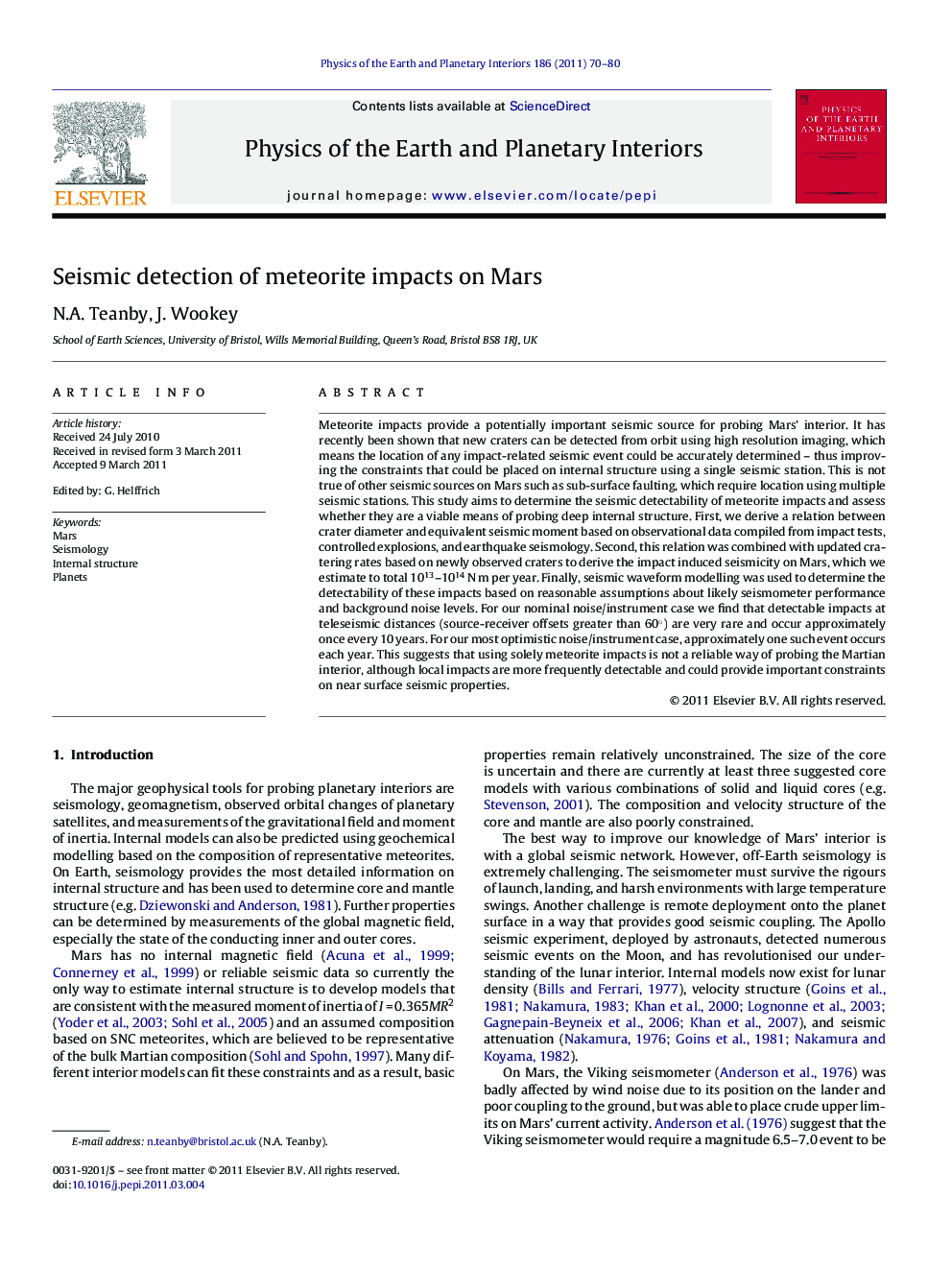| Article ID | Journal | Published Year | Pages | File Type |
|---|---|---|---|---|
| 4741958 | Physics of the Earth and Planetary Interiors | 2011 | 11 Pages |
Meteorite impacts provide a potentially important seismic source for probing Mars’ interior. It has recently been shown that new craters can be detected from orbit using high resolution imaging, which means the location of any impact-related seismic event could be accurately determined – thus improving the constraints that could be placed on internal structure using a single seismic station. This is not true of other seismic sources on Mars such as sub-surface faulting, which require location using multiple seismic stations. This study aims to determine the seismic detectability of meteorite impacts and assess whether they are a viable means of probing deep internal structure. First, we derive a relation between crater diameter and equivalent seismic moment based on observational data compiled from impact tests, controlled explosions, and earthquake seismology. Second, this relation was combined with updated cratering rates based on newly observed craters to derive the impact induced seismicity on Mars, which we estimate to total 1013–1014 N m per year. Finally, seismic waveform modelling was used to determine the detectability of these impacts based on reasonable assumptions about likely seismometer performance and background noise levels. For our nominal noise/instrument case we find that detectable impacts at teleseismic distances (source-receiver offsets greater than 60°) are very rare and occur approximately once every 10 years. For our most optimistic noise/instrument case, approximately one such event occurs each year. This suggests that using solely meteorite impacts is not a reliable way of probing the Martian interior, although local impacts are more frequently detectable and could provide important constraints on near surface seismic properties.
► We model seismic signals generated by meteorite impacts on Mars. ► We predict the total seismic moment released by impacts is 1e13–1e14 N m per year. ► Nominally, about one globally detectable impact event should occur every ten years. ► Meteorite impacts do not provide a dependable way of probing the deep interior.
